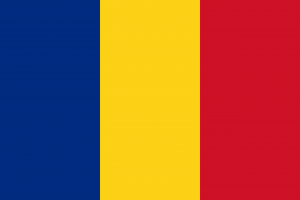Language/Romanian/Grammar/Personal-Pronouns
As a beginner Romanian language learner, it is important to start with the basics. Understanding personal pronouns is essential to being able to form simple sentences and communicate properly. In this lesson, we will go over the Romanian personal pronouns: I, you, he, she, it, we, and they.
Once you've mastered this lesson, take a look at these related pages: 0 to A1 Course & Gender.
Romanian Personal Pronouns
Personal pronouns replace a noun and represent a person, place, thing or idea. In Romanian, personal pronouns have a form for each person, gender (masculine/feminine) and number (singular/plural). Here is a table of Romanian personal pronouns:
| Romanian | Pronunciation | English |
|---|---|---|
| Eu | [ju] | I |
| Tu | [tu] | You (informal singular) |
| El | [el] | He |
| Ea | [ja] | She |
| Noi | [noj] | We |
| Voi | [voj] | You (informal plural) |
| Ei | [ej] | They (masculine) |
| Ele | [ele] | They (feminine) |
It is important to note that the Romanian language also has a formal and polite way of addressing people, which is done through the use of the third person singular pronoun "dumneavoastră". This pronoun will not be covered in this lesson, as it is more advanced.
Here are some examples of how to use personal pronouns in Romanian:
- Eu sunt din România. (I am from Romania.)
- Tu ești student. (You are a student.)
- El este doctor. (He is a doctor.)
- Ea este profesoară. (She is a teacher.)
- Noi suntem prieteni buni. (We are good friends.)
- Voi sunteți frumoși. (You are beautiful.)
- Ei sunt actori celebri. (They are famous actors.)
- Ele sunt dansatoare talentate. (They are talented dancers.)
As you can see from the above examples, personal pronouns are used in place of the noun. This helps to make your sentences shorter and more concise, which is especially useful when you are still learning the language.
It is also important to remember that personal pronouns change depending on the context of the sentence. For example, if you are talking about a group of people that includes males and females, you would use the masculine pronoun "ei" instead of the feminine pronoun "ele".
Conclusion
Learning personal pronouns is an important part of mastering the Romanian language. By understanding these pronouns, you can begin to form simple sentences and communicate more effectively in Romanian. Remember to practice using personal pronouns in different contexts to become more comfortable with them.
In the next lesson, we will cover the present tense of verbs in Romanian. Until then, keep practicing and don't hesitate to ask questions. Mulțumesc (thank you)!
Upon wrapping up this lesson, take a look at these related pages: Instrumental Case in Romanian & Definite Articles in Romanian.
Videos
The Romanian Subject Pronoun (pronumele personal) | Learn ...
Lesson 1 I Personal Pronouns in Romanian - YouTube
Other Lessons
- Forming Questions
- Questions
- Nouns and Pronouns
- Genitive Case in Romanian
- Give your Opinion
- Gender of Nouns
- The Accusative Case in Romanian
- Basic Prepositions
- The Locative Case in Romanian
- Verbs and Conjugation
Sources
- Romanian Language Personal pronouns | Romanian Lesson
- Romanian grammar - Wikipedia
- Romanian Pronouns: Personal, Possessive, Relative, and ...

